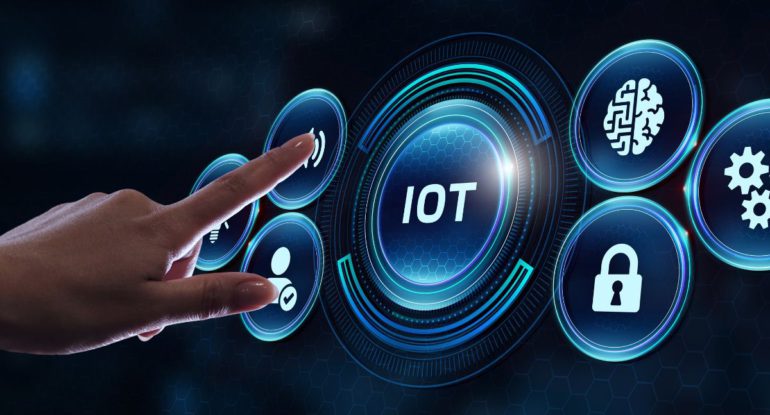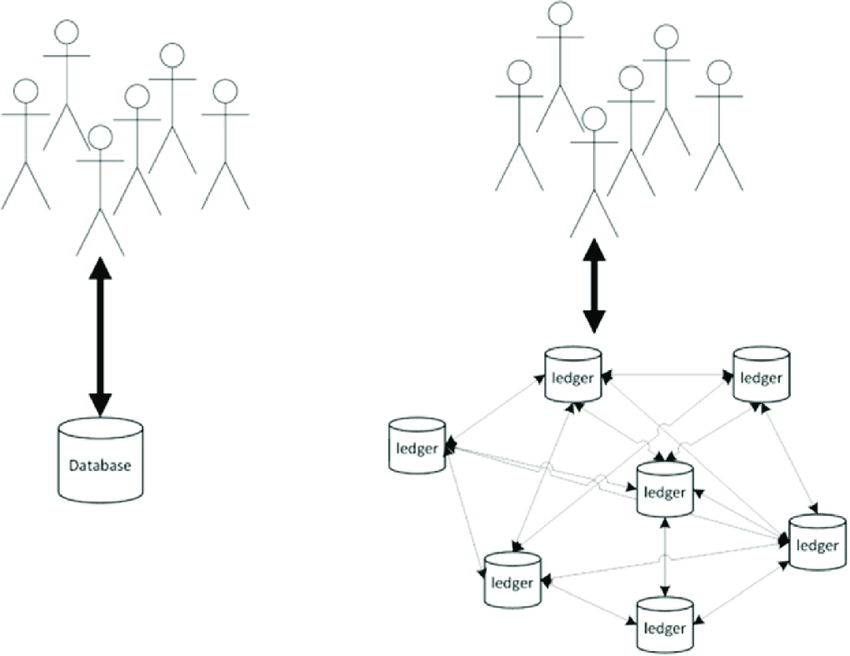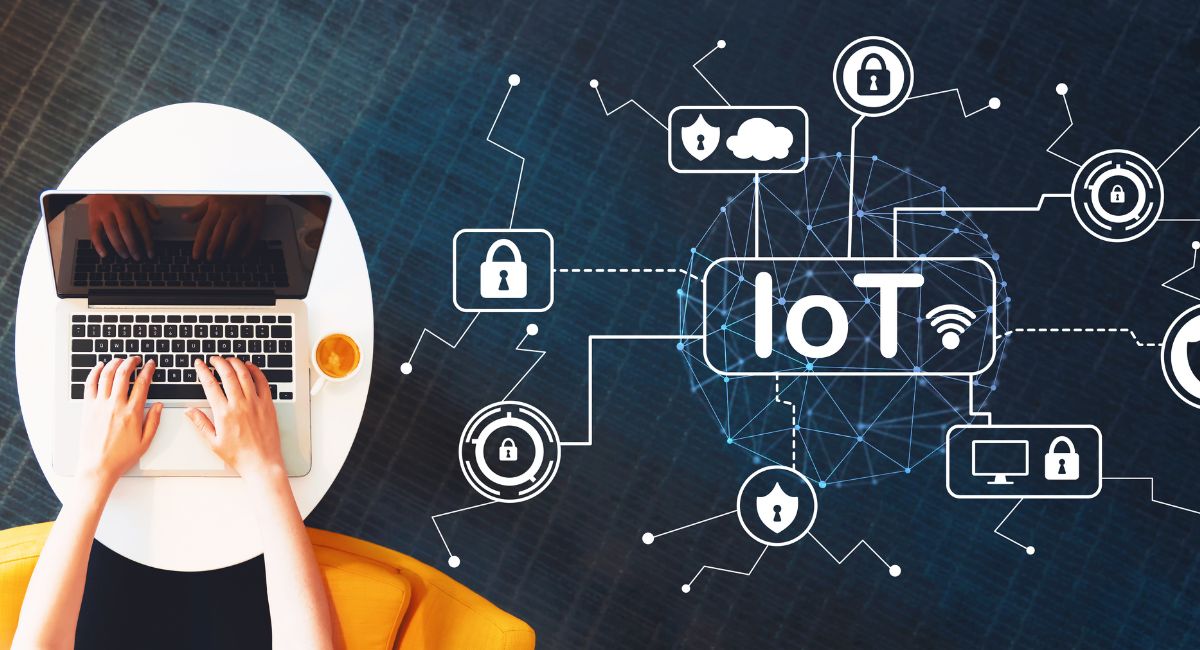How Will IoT Data Will Power The World Of Metaverse?

The Internet of Things (IoT) refers to the interconnected network of physical devices, vehicles, appliances, and other objects embedded with sensors, software, and network connectivity, enabling them to collect and exchange data. This interconnected web allows for seamless communication and data sharing between devices, creating a smart and efficient environment.
Definition of the Metaverse in the Context of IoT:
In the context of IoT, the Metaverse is an expansive virtual space that seamlessly incorporates real-world data from IoT devices. It transcends the boundaries of traditional virtual reality by merging physical and digital realities, creating a dynamic and interconnected environment.
Overview of the Interconnected Relationship:

The relationship between IoT and the Metaverse is symbiotic. IoT devices generate vast amounts of real-world data through sensors, capturing information about the physical environment. This data becomes a crucial building block for the Metaverse, providing the foundation for creating realistic and responsive virtual environments.
IoT devices serve as the eyes and ears of the Metaverse, feeding it with real-time information. For example, smart sensors in a city can transmit data about traffic patterns, weather conditions, and air quality to the Metaverse. This integration enhances the virtual experience by reflecting the dynamics of the physical world.
In return, the Metaverse enriches the utility of IoT data by providing a virtual layer for analysis and visualization. It allows users to interact with data in immersive ways, enabling better insights and decision-making. This interconnected relationship enhances the overall capabilities of both IoT and the Metaverse.
Significance of IoT Data in Powering the Metaverse:

- Realism and Immersion: IoT data contributes to creating a more realistic and immersive Metaverse by incorporating real-world information. This leads to a more authentic virtual experience.
- Dynamic Environments: The dynamic nature of IoT data ensures that the Metaverse is constantly evolving. Changes in the physical world, such as traffic fluctuations or weather shifts, are mirrored in the virtual space, providing a dynamic and responsive environment.
- Enhanced User Interaction: The Metaverse leverages IoT data to enable users to interact with virtual elements based on real-world parameters. This interaction adds depth to the user experience, making it more engaging and meaningful.
- Data-driven Insights: The wealth of data generated by IoT devices enhances the analytical capabilities of the Metaverse. Businesses and individuals can derive valuable insights from this data, aiding in strategic decision-making and planning.
Real-time Data Feeds Enhancing Virtual Environments:

The integration of IoT data into the Metaverse introduces a new dimension of realism and responsiveness. IoT devices, equipped with various sensors, continuously gather real-time information about the physical world. This data, ranging from environmental conditions to human activities, serves as a constant feed into the Metaverse.
For instance, sensors in smart cities can relay data about traffic patterns, air quality, and energy consumption. This information is then translated into the virtual space, enhancing the fidelity of the Metaverse. Users can experience virtual environments that mirror the complexities and nuances of the real world, creating a more immersive and authentic experience.
Creating Dynamic and Responsive Virtual Spaces:
One of the key advantages of integrating IoT data is the ability to create dynamic and responsive virtual spaces. Changes in the physical world are immediately reflected in the Metaverse, ensuring that the virtual environment evolves in real-time. This dynamic nature adds a layer of unpredictability and excitement to virtual experiences.
For example, if there’s a sudden weather change or a traffic disruption in a city monitored by IoT devices, the Metaverse will adjust accordingly. Virtual landscapes can mimic real-world scenarios, providing users with an ever-changing and engaging digital realm.
Enabling User Interaction with IoT-Driven Elements:
The integration of IoT data empowers users to interact with elements in the Metaverse based on real-world parameters. Virtual objects and scenarios can respond to the data generated by IoT devices, creating a personalized and interactive experience.
Consider a scenario where users can control virtual smart home devices through the Metaverse. The status and functionality of these virtual devices are linked to the real-time data collected by IoT sensors in their physical counterparts. Users can witness the impact of their actions in the virtual space, reinforcing the connection between the digital and physical realms.
IoT and in the Metaverse world
A. In Healthcare:
Overview: In healthcare, the integration of IoT and the Metaverse revolutionizes patient care, training, and medical research.
- Virtual Medical Training: Medical professionals can undergo realistic virtual training sessions where IoT data simulates patient conditions. This immersive training enhances medical expertise and decision-making skills.
- Remote Patient Monitoring: IoT devices collect real-time health data from patients, and this information is integrated into the Metaverse. Healthcare providers can remotely monitor patients’ conditions and provide timely interventions.
- Medical Research Simulation: Researchers can use the Metaverse to simulate and analyze complex medical scenarios. The integration of IoT data allows for a more accurate representation of diverse health conditions, accelerating research and development.
B. Smart Cities: Urban Planning and IoT in Virtual Environments:
Overview: In the context of smart cities, the combination of IoT and the Metaverse plays a pivotal role in urban planning and management.
- City Simulation: Urban planners can create virtual replicas of cities using IoT data. This allows for testing and optimizing various scenarios, such as traffic flow, energy consumption, and environmental impact.
- Public Engagement: The Metaverse facilitates public engagement by visualizing proposed changes in the urban landscape. Citizens can explore virtual representations of planned projects and provide feedback, fostering a collaborative approach to city planning.
- Real-time Monitoring: IoT sensors in smart cities provide real-time data on traffic, air quality, waste management, and more. Integrating this data into the Metaverse allows for comprehensive monitoring and analysis, leading to data-driven urban development.
C. IoT-driven Education and Training in the Metaverse:
Overview: Education and training benefit from the synergy of IoT and the Metaverse, offering immersive and personalized learning experiences.
- Virtual Classrooms: The Metaverse enables the creation of virtual classrooms where IoT data replicates real-world conditions. This enhances practical learning experiences for students, especially in fields like science and engineering.
- Hands-on Simulations: IoT-driven simulations in the Metaverse provide students with hands-on experiences. For example, engineering students can interact with virtual machinery connected to real-time IoT data, gaining practical insights into their field.
- Professional Development: Training programs across industries can use the Metaverse to simulate real-world scenarios. IoT data integration ensures that the training environment reflects the challenges and conditions professionals may encounter in their roles.
D. Business and Commerce: Integration of IoT Data for Virtual Transactions:
Overview: In the business and commerce sector, the integration of IoT and the Metaverse enhances virtual transactions, customer experiences, and supply chain management.
- Virtual Shopping Experiences: Retailers can create virtual storefronts in the Metaverse, incorporating IoT data to showcase real-time product availability, customer reviews, and personalized recommendations.
- Supply Chain Optimization: IoT sensors in the physical supply chain contribute real-time data to the Metaverse, allowing businesses to optimize inventory management, track shipments, and predict demand more accurately.
- Immersive Marketing: The Metaverse becomes a platform for immersive marketing experiences. Businesses can leverage IoT data to tailor virtual campaigns, ensuring targeted and personalized interactions with customers.
Emerging Technologies Shaping the Convergence of IoT and the Metaverse:
1. 5G Networks: The widespread deployment of 5G networks will significantly enhance the connectivity and data transfer capabilities between IoT devices and the Metaverse. Low latency and high bandwidth will facilitate real-time interactions, making virtual experiences more seamless and responsive.
2. Edge Computing: The integration of edge computing with IoT and the Metaverse will reduce latency by processing data closer to the source. This allows for quicker decision-making and enhances the overall efficiency of virtual experiences, especially in scenarios where real-time data is crucial.
3. Artificial Intelligence (AI): AI algorithms will play a vital role in analyzing and interpreting the massive amounts of data generated by IoT devices. In the Metaverse, AI-driven personalization and contextual adaptation will create more immersive and tailored experiences for users.
4. Extended Reality (XR): The evolution of XR, encompassing augmented reality (AR), virtual reality (VR), and mixed reality, will contribute to more diverse and sophisticated IoT-driven Metaverse experiences. XR technologies will blur the lines between the physical and virtual worlds, offering users a more immersive and interactive environment.
Predictions for the Evolution of IoT-Driven Metaverse Experiences:
1. Hyper-Personalization: IoT data will be harnessed to create hyper-personalized Metaverse experiences. Virtual environments will dynamically adapt to individual preferences, behaviors, and real-time data, providing users with tailored and engaging interactions.
2. Seamless Cross-Platform Integration: The future Metaverse will likely see seamless integration across various platforms and devices. Users may transition effortlessly between physical and virtual spaces, using a combination of wearables, smart devices, and immersive technologies for a cohesive experience.
3. Enhanced Security Measures: As the integration of IoT and the Metaverse becomes more prevalent, ensuring the security of sensitive data will be a top priority. Advanced encryption, secure communication protocols, and robust identity verification measures will be implemented to safeguard user information.
4. Virtual Economies and Transactions: The Metaverse is anticipated to host robust virtual economies where IoT-driven transactions, enabled by blockchain technology, become commonplace. This may include virtual asset exchanges, digital currencies, and secure virtual marketplaces.
Collaborative Efforts and Industry Initiatives:
1. Standardization Initiatives: Industry leaders and standardization bodies are likely to collaborate on establishing common standards for the integration of IoT and the Metaverse. This will ensure interoperability, seamless data exchange, and a consistent user experience across platforms.
2. Cross-Industry Collaboration: Collaborative efforts between industries, such as technology, healthcare, education, and commerce, will drive innovation in IoT-driven Metaverse applications. Shared insights and expertise will contribute to the development of versatile and universally applicable solutions.
3. Research and Development Partnerships: Public and private research institutions may form partnerships to explore the full potential of IoT and the Metaverse. These collaborations could lead to breakthroughs in technology, addressing challenges and pushing the boundaries of what is achievable.
In conclusion, the future convergence of IoT and the Metaverse holds exciting prospects, fueled by emerging technologies, user-centric experiences, and collaborative industry efforts. As these innovations unfold, the boundaries between the physical and virtual worlds will continue to blur, offering a transformative and dynamic digital landscape.
Related posts
Editor's Choice
- BlockDAG Set To Reach $20 by 2027, Exceeding Polkadot’s 2024 Growth and ADA’s Price Rise
- BlockDAG Outshines Dogecoin Value & Polygon Price With Lunar Keynote Teaser & 30,000x ROI Potential
- Top 9 Historical Moments In The Ethereum Scalability Story And The Monumental Evolution Of Rollups
- New ICO Projects With Highest Upside Potential: DTX Exchange, BlockDAG, and Kangamoon Presale
- Top 10 Ways Of Making Ethereum Layer 2 Solutions Surprisingly Cost Effective
Hottest Blockchain News Daily
Get our latest posts and announcements in your inbox.
[cn-social-icon attr_class=”social-share-side”]




























































